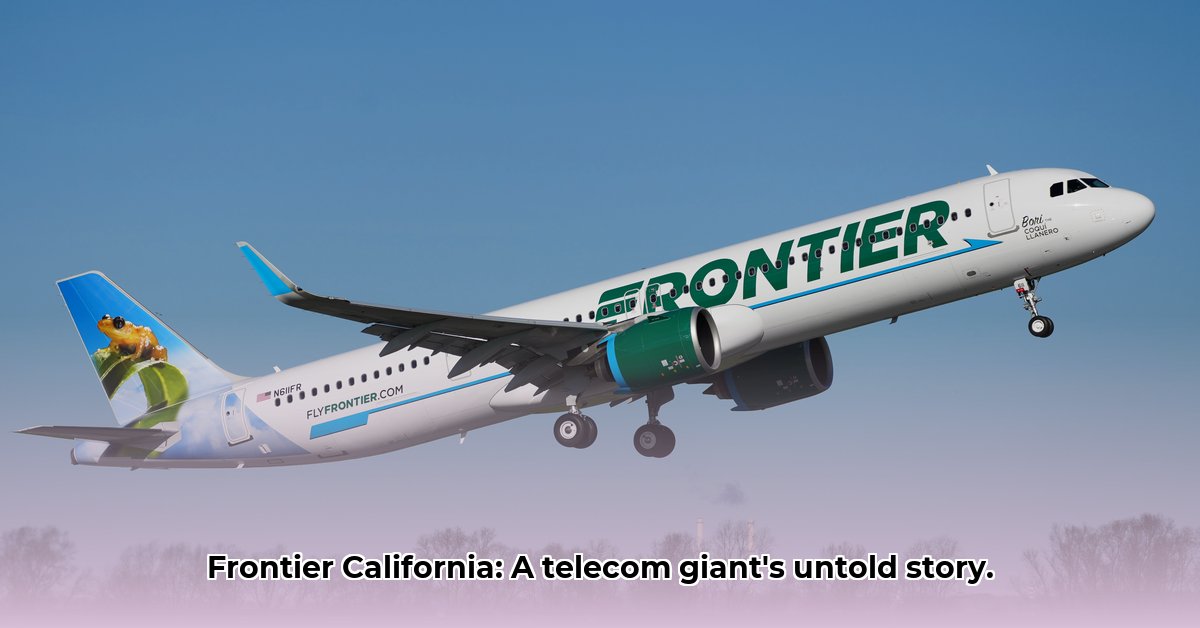
Frontier California Inc.'s story is a compelling narrative of technological advancement, strategic maneuvering, and adaptation within the dynamic California telecommunications landscape. This journey, spanning decades, began long before the "Frontier" name became synonymous with California's phone lines.
GTE's California Conquest: A Challenging Beginning
The late 20th century saw GTE, a major telecommunications player, enter the rapidly expanding California market. Their ambition was to blanket the state with a robust network, but this proved far from easy. Detailed data on GTE's early performance remains elusive, akin to searching for a specific sand grain on a vast beach. However, anecdotal evidence suggests initial struggles were prevalent. The sheer scale of the undertaking—laying lines across a diverse, sprawling state while simultaneously upgrading from mechanical to electronic switching systems—presented monumental challenges. This modernization, while necessary for reliable service, likely contributed to early setbacks. GTE wasn't alone; the entire industry faced similar upheaval. How did this initial struggle shape their future strategy? The answer lies in their subsequent choices.
A Game of Telecom Chess: Mergers and Acquisitions
GTE's California strategy went beyond mere infrastructure building; they engaged in a skillful game of mergers and acquisitions. The acquisition of ConTel dramatically boosted their market share and consolidated resources. This mirrored industry-wide trends; telecom was consolidating rapidly. This era resembles a high-stakes chess match, with companies merging and acquiring to control market dominance. Such large-scale mergers were inherently complex, demanding careful integration of systems and teams. Did this aggressive acquisition strategy ultimately prove beneficial? The answer unveils itself through subsequent events.
The 213 Area Code Split: A Statewide Disruption
The splitting of the 213 area code, encompassing Los Angeles, into 213 and 310 was a watershed moment. It wasn't simply a technical adjustment; it disrupted countless businesses and individuals. Imagine the logistical nightmare of updating business cards, marketing materials, and websites! This illustrates the challenges of coordinating widespread change in a multi-million person market. This significant event highlights the complexities of growth and modernization within a rapidly expanding region. Its impact significantly impacted the way businesses and customers navigated the expanding California telecommunications landscape.
From GTE to Verizon to Frontier: A Shifting Landscape
A major shift occurred when Verizon acquired GTE's California operations. This was a monumental event, representing a significant strategic alteration for both companies. Later, Verizon's California holdings were sold to Frontier Communications. What influenced these decisions? What opportunities did Frontier perceive in this acquisition? These fundamental questions remain important in understanding the trajectory of Frontier California.
Frontier California Inc. Today: A Competitive Market
Frontier California Inc. faces the ongoing challenges of maintaining a high-quality network, investing in upgrades, and competing fiercely. Customer satisfaction, regulatory compliance, and technological innovation are paramount. Their ongoing success relies on staying ahead of the curve in a fast-evolving technological landscape. What strategic measures are required to consistently thrive in this dynamic market? The answer requires understanding the future projections.
Actionable Intelligence: Navigating the Future
Based on current trends, we can anticipate future challenges and opportunities:
- Customer Service Enhancement: Frontier must prioritize improvements in customer service to maintain consumer loyalty.
- Strategic Partnerships: Collaboration with key partners could unlock innovation and enhance the company's market position.
- Technological Superiority: Innovative service packages and technological advancements are essential to outpace competitors.
The history of Frontier California Inc. is a dynamic narrative, illustrating the delicate balance between technology, regulation, and competition. Further research into GTE's early operations and the long-term consequences of regulatory decisions is necessary for a richer understanding. However, the core takeaway remains consistent: adaptability and strategic vision are critical for success in this rapidly evolving industry.